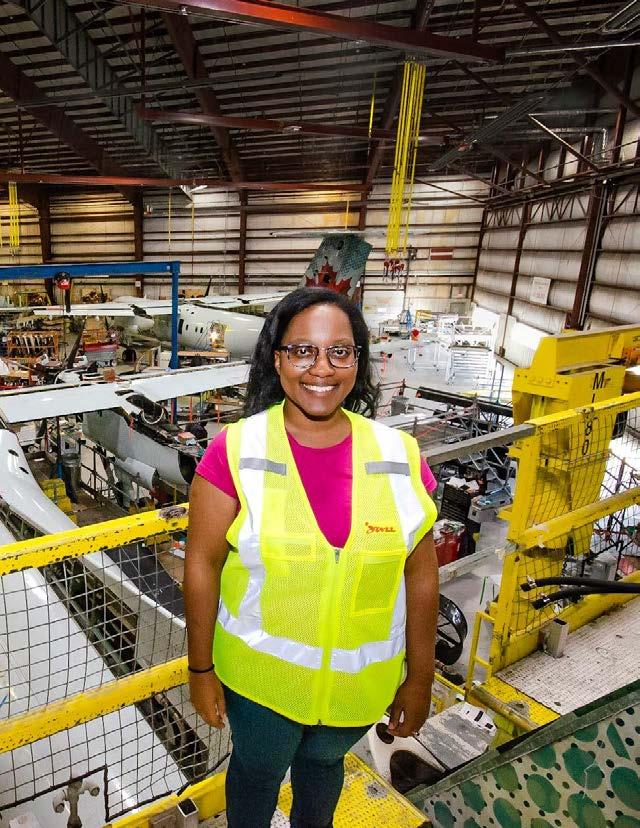







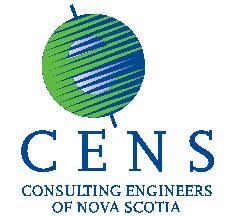
Are you a partner with Engineers Nova Scotia? The Community Connections page provides your organization with a connection to our readership of professionals and innovators across the province. Download our 2024 Media Kit to have your logo featured in Community Connections or to place an ad.


Casting light on the world’s greatest challenges
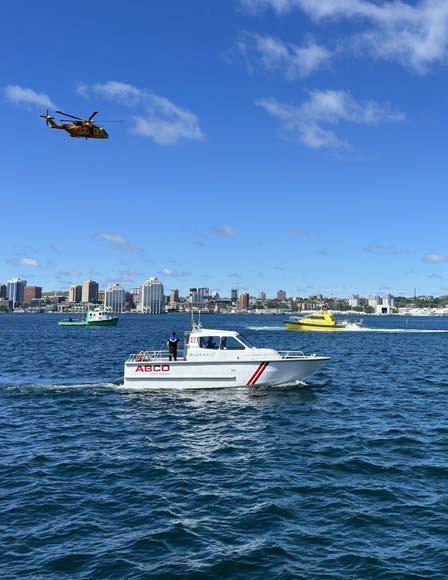


Dr. Adam Donaldson, FEC, P.Eng.
Dr. Sue Molloy, P.Eng.
Denise Pothier, FEC, P.Eng.
Krista Phillips, P.Eng.
Dilan Watson, P.Eng.
Cliff Johnston, P.Eng.
Ian Squires, P.Eng.
Dr. Allison Mackie, FEC, P.Eng.
Leon MacLellan, P.Eng.
Roxanne Tate, FEC, P.Eng.
Laura White, P.Eng.
Ex-Officio Members
DS (Pal) Mann, P.Eng.
Crysta Cumming, FEC, P.Eng.
Dr. John Newhook, FEC, P.Eng.
Zone Representatives
Harry Daemen, FEC, P.Eng.
Darrin McLean, P.Eng.
Oliver Browning, FEC, P.Eng.
Andrew Polegato, FEC, P.Eng.
Vivek Tomar, FEC, P.Eng.
Conrad LeLièvre, FEC, P.Eng.
Ron Marks, FEC, P.Eng.
Committee Chair Persons
Blair Forbrigger, FEC, P.Eng.
Debra McLellan, P.Eng.
John Eisnor, P.Eng.
George Goad, FEC, P.Eng.
Matthew Glynn, P.Eng.
Jeff Knapp, FEC, P.Eng.
Andrew Thalheimer, P.Eng
Darrell Marsh, P.Eng.
Browren Allard, P.Eng.
James Beck, P.Eng.
Lawrence Murphy, P.Eng.
Christine Bonnell-Eisnor, FEC, P.Eng.
Helen Langille, P.Eng.
President
Vice-President
Past-President
Councillor
Councillor
Councillor
Councillor
Councillor
Councillor
Councillor
Councillor
CEO & Registrar Engineers Canada Director
Dean, Faculty of Engineering
Professor, Civil and Resource Engineering, Dalhousie University
Antigonish/Guysborough
Cape Breton/Victoria
Colchester
Cumberland
Halifax/Hants
Kings/Annapolis
Pictou
Board of Examiners
Complaints
Continuing Professional Development Discipline
Emerging Professionals
Finance & Audit
Honours & Awards
National Engineering Month
Professional Practice
Safety
Sustainability
Student Affairs
Women in Engineering
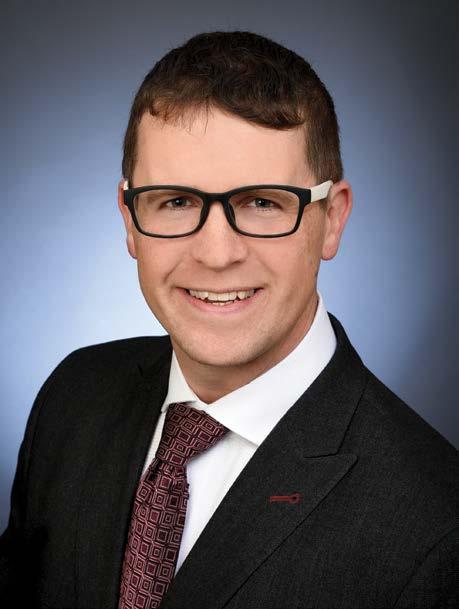
Adam Donaldson, FEC, P.Eng., President
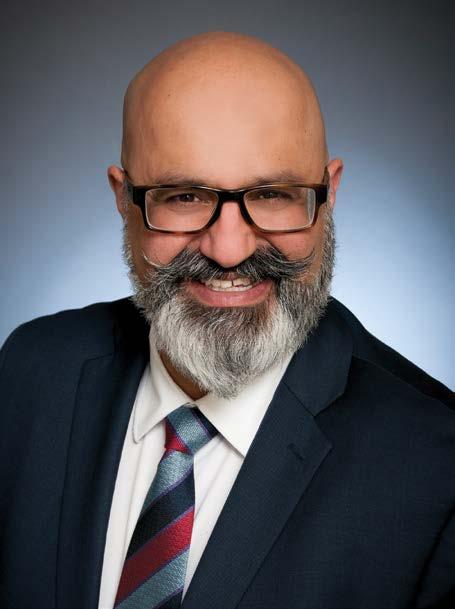
Pal Mann, CD, FCSSE, ICD.D., P.Eng., CEO & Registrar
As we continue to survey the engineering environment, we see the potential for engineering professionals to take on a large role in the Government of Nova Scotia’s 2024-25 budget, Building Nova Scotia, Faster. The budget sets ambitious targets in healthcare, housing, and community support, all aimed at fostering economic growth and improving Nova Scotians’ quality of life.
After reviewing the budget and its call for action, we can see various ways that Engineers Nova Scotia and its registrants are uniquely positioned to contribute to these efforts through their expertise, innovation, and commitment to public welfare.
One of the key budget focuses is to support Nova Scotians by making living costs more affordable, creating supportive housing, and implementing a province-wide school lunch program. Engineers can significantly impact these efforts through:
∙ Affordable Housing: Engineers are crucial in designing and over-seeing the construction of cost-effective, sustainable housing solutions tailored to diverse populations – from multi-story residential buildings to new subdivisions.
∙ Supportive Housing: Engineers can use their expertise to design accessible, safe, and comfortable housing for people with disabilities and other vulnerable groups using the principles of universal design.
∙ School Infrastructure: Engineers play a pivotal role in designing and constructing schools and facilities, ensuring these buildings are safe, efficient, and conducive to learning, and supporting the needs of our children.
∙ Infrastructure Development: By developing and improving infrastructure, such as transportation networks to improve the ability to move, and creating more resilient public utilities that leverage new technologies, engineers can develop solutions to help make living costs more manageable.
The budget outlines substantial investments in healthcare, including virtual care expansion and modernizing clinical approaches. Engineers can contribute significantly in these areas:
∙ Healthcare Facilities:
Designing and constructing stateof-the-art healthcare facilities that incorporate the latest technologies and clinical approaches; engineers have been involved in several successful hospital projects across the province.
∙ Virtual Care Infrastructure:
Developing robust digital infrastructure to support virtual care, ensuring accessibility and reliability for all residents. The reliance on virtual care platforms has become a reality for many Nova Scotians who do not have a family physician.
∙ Healthcare Systems:
Optimizing healthcare delivery systems for better coordination and efficiency, integrating new technologies and advanced diagnostic tools. We have seen Industrial Engineers working with health care professionals to accelerate care delivery, and we continue to see incredible advances in robotics and biomedical engineering.
Investing in education and training is another key area of the budget, aimed at preparing residents for in-demand jobs and supporting economic growth. Engineering firms can play a large role in helping develop and deliver programs to assist engineering students and Engineers-in-Training (EITs), sharing their expertise to prepare the next generation’s workforce for in-demand jobs by supporting Student Cooperative Programs, EIT Programs, and Recruitment and Transition programs for internationally educated engineers.
This investment is necessary for Nova Scotia’s future wellbeing.
Engineers Nova Scotia’s mission, guided by the Engineering Profession Act, emphasizes licensing qualified and competent registrants, assisting them to practice engineering in the best interests of the public. The organization’s vision of a safe and sustainable Nova Scotia, protected by accessible, progressive, and trusted regulation of the engineering profession, aligns perfectly with the government’s strategic priorities. Engineers Nova Scotia continues with its regulatory functions of:
∙ Licensing and Compliance: Ensuring all practicing engineers meet high professional standards is crucial for maintaining public trust and safety, and adopting a risk-based enforcement process to prevent those




not licensed to practice engineering in Nova Scotia from doing so.
∙ Registrant Support:
Providing ongoing professional development opportunities ensures engineers stay updated with the latest advancements and best practices to support continuing competency, a key factor in maintaining the social license afforded to the engineering profession. Our work to provide current practice guidelines is geared at supporting practice by identifying best practices that improve engineering work and safeguard the public interest.
∙ Partnerships:
Collaborating with other national and provincial regulators and interested organizations to align efforts, and to leverage the shared resources and expertise that help us support provincial efforts.

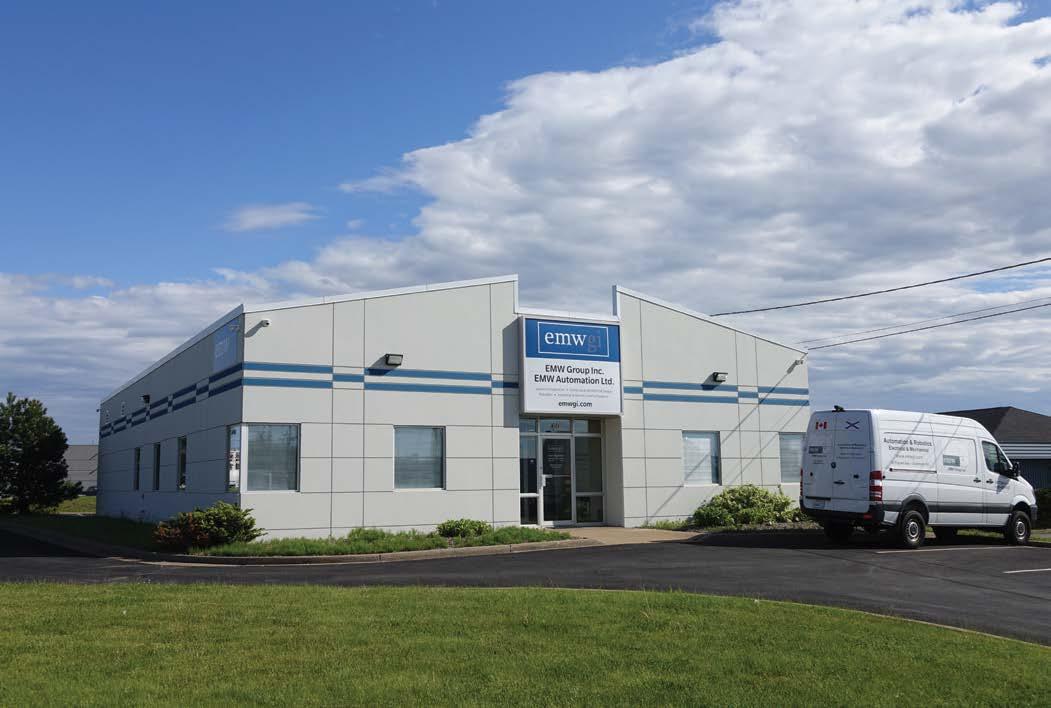
Engineers Nova Scotia and its registrants are vital to the successful implementation of the Government of Nova Scotia’s 2024-25 budget goals. By contributing their skills and expertise as contributors to multi-disciplinary teams, engineers can use their innovation, technical skills and problem-solving mindset to help build a prosperous, sustainable future for Nova Scotia.
Engineers Nova Scotia has engaged with the Government of Nova Scotia through talks with the Department of Immigration, Skills, and Labour regarding internationally educated engineers, the Fair Registration Practices Office on licensing processes, with technical boards such as the Building Advisory Committee, and the independent Utility and Review Board to nominate engineers for appointments. We are a trusted voice and recognized as an important team player who can assist the Government to “Build Nova Scotia, Faster.” We look forward to continued collaboration with the Government of Nova Scotia.
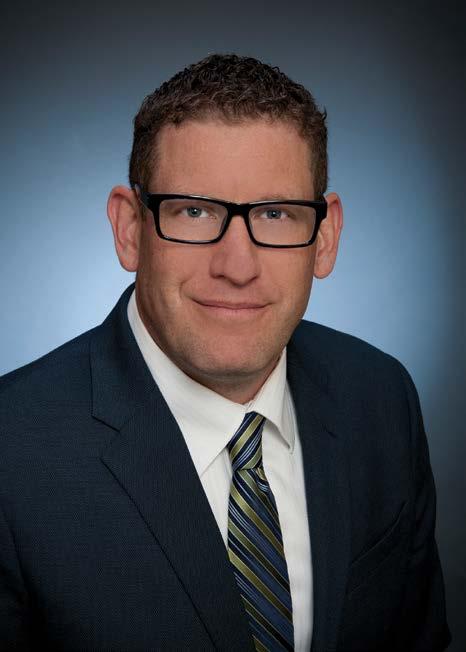
Kris Dove, MBA, FEC, P.Eng. Chief Operating Officer and Treasurer
Following Council approval of the Atlantic Regulators Continuing Professional Development (CPD) requirements in December 2023, work continues towards implementing the new CPD program. Registrant engagement sessions have been held across the province and virtually throughout June, July and August. These sessions have been well-attended and served as an opportunity to introduce the upcoming CPD program changes to registrants, answer questions, and identify areas where additional program support and clarification are required before implementation.
The modernization initiative is not just a change — it’s a complete transformation.
It’s about adapting to the new realities of our profession and ensuring that engineers are equipped with the knowledge and skills necessary to lead in a rapidly changing world. The new CPD program is designed to be more
flexible, diverse and inclusive, reflecting the wide range of learning opportunities that an engineer encounters.
The modernized CPD program introduces new learning categories that recognize the varied ways registrants can grow professionally, as opposed to activities where CPD hours can be earned. This inclusive approach ensures that every registrant’s unique path to professional development is valued and supported. The new learning categories include Ethical Practice, Regulatory Learning, Technical Learning and Communications and Leadership. With innovation at its core, the CPD program brings fresh aspects to the forefront. It emphasizes the importance of learning activities that contribute directly to the advancement of the profession and the well-being of the public.
Registrants will use their judgment to select activities that relate to their scope of practice, and contribute to their regulatory compliance and continuing competency in their pursuit of public protection. For example, registrants in strictly technical roles may choose primarily Technical Learning to maintain competency, combined with enough Ethical Practice and Regulatory Learning to stay knowledgeable about their responsibilities. They may also decide on Communications and Leadership to fulfill their duties and communicate effectively. In contrast, registrants in management or leadership roles may benefit more from focusing on Communications and Leadership combined with the Ethical Practice and
Regulatory Learning categories to meet the CPD program requirements.
Significant program updates include reducing the required professional development hours (PDHs) to 30 PDHs/year, down from 80 PDHs/ year. Recording professional practice hours (currently 50 PDHs) is no longer required, though registrants should still maintain work records. The program allows unlimited hours in any category and introduces a 1:1 ratio for PDH accumulation. Reporting of PDHs through the Member Login area of our website will become mandatory, and an annual audit program will be implemented to randomly audit a small percentage of registrants.
In the modernized CPD program, engineers-in-training (EITs) are not required to participate formally but are encouraged to. This is a departure from the current CPD requirements and is in alignment with the current practice of the other provincial engineering regulators.
Additionally, a new Atlantic Learning Management System will be implemented to provide registrants access to web-based content developed by Engineers Nova Scotia and the other Atlantic engineering regulators. This will give registrants relevant and no-cost access to CPD opportunities, where content will be created and updated regularly.
To implement the modernized CPD program, a by-law change is necessary to remove the minimum number of annual PDHs required (currently set at 80 PDHS/year). This is outlined in the current by-laws, Section 13C (2), with the updated by-law removing the reference to the minimum PDH requirement.

The change has been reviewed by legal counsel, who is working with government legal counsel to manage the by-law change process. Approval requires that 2/3 of registrants who vote be in favour of the by-law change, followed by approval from the Governor in Council. Additional communications regarding the by-law change and process will be provided in the coming months.
It should be noted that the Council is empowered to set the CPD program requirements by approving CPD guidelines under Section 6 (1) (ga) of the Act. The by-law vote is not to approve the CPD program changes but rather to remove the minimum number of annual hours required in the existing by-laws.
The journey to modernization is a collaborative effort. The next steps include developing program supports designed to assist registrants in navigating the new CPD requirements. Workshops, webinars, and guidance documents will be developed to provide clarity and support throughout the transition. Staff will continue working with the CPD Committee to develop, review, validate, and deliver CPD program support prior to the new CPD program going live. Work is also underway to finalize activities for a by-law change, and updates will be provided regarding a registrant vote.
The modernization of the CPD program is a testament to the Atlantic engineering regulators’ commitment to excellence in professional practice. It is a bold step forward that will empower engineers to continue learning, growing, and contributing to the betterment of society.
Please get in touch with me to discuss if you have any questions or comments regarding the modernized CPD program or any area related to Professional Practice, the Complaints and Discipline process, or the Engineering Profession Act or by-laws. I can be contacted at kdove@engineersnovascotia.ca.

our website to update personal information or email info@engineersnovascotia.ca
It’s a registrant’s responsibility to keep their info up-to-date. engineersnovascotia.ca






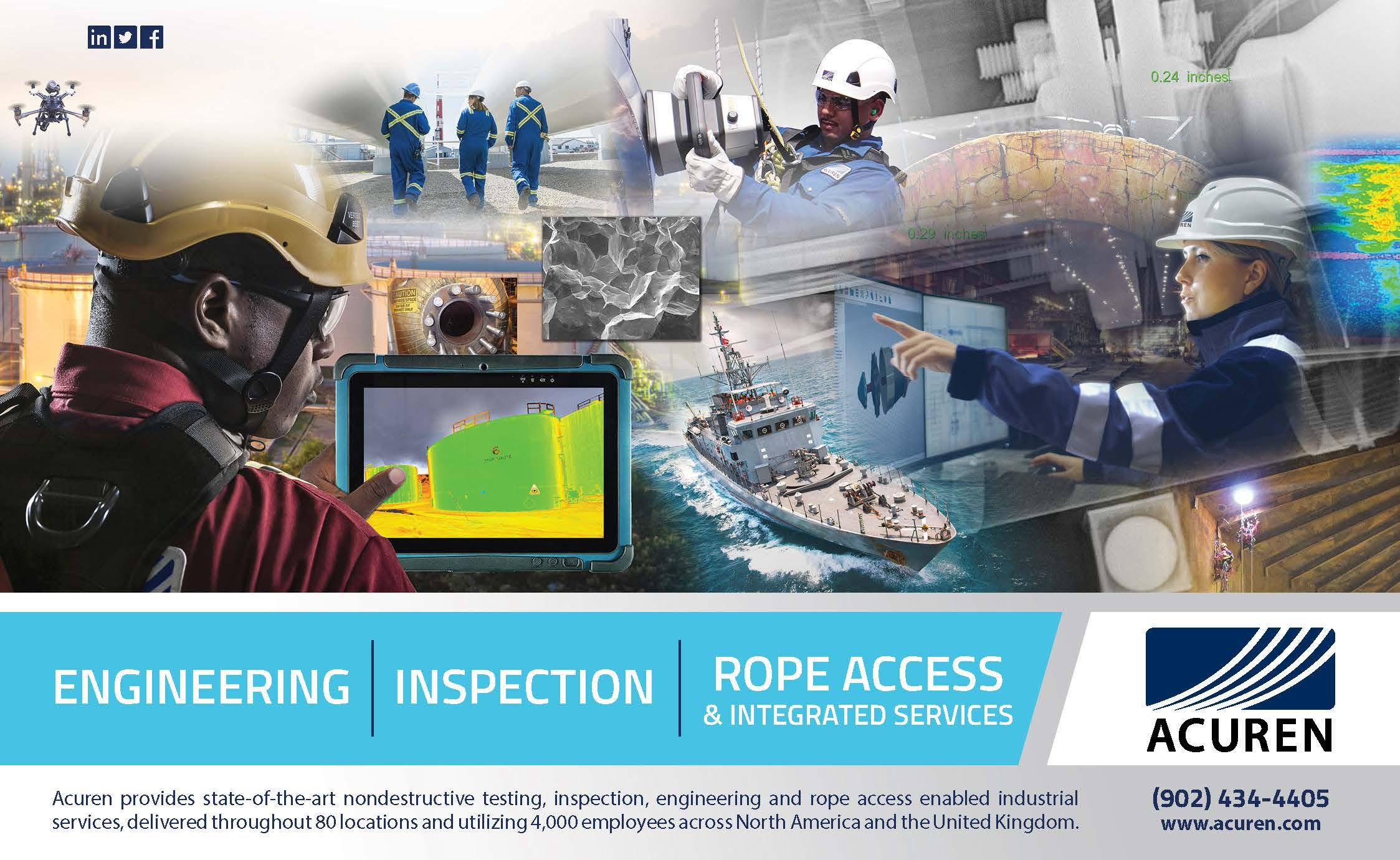
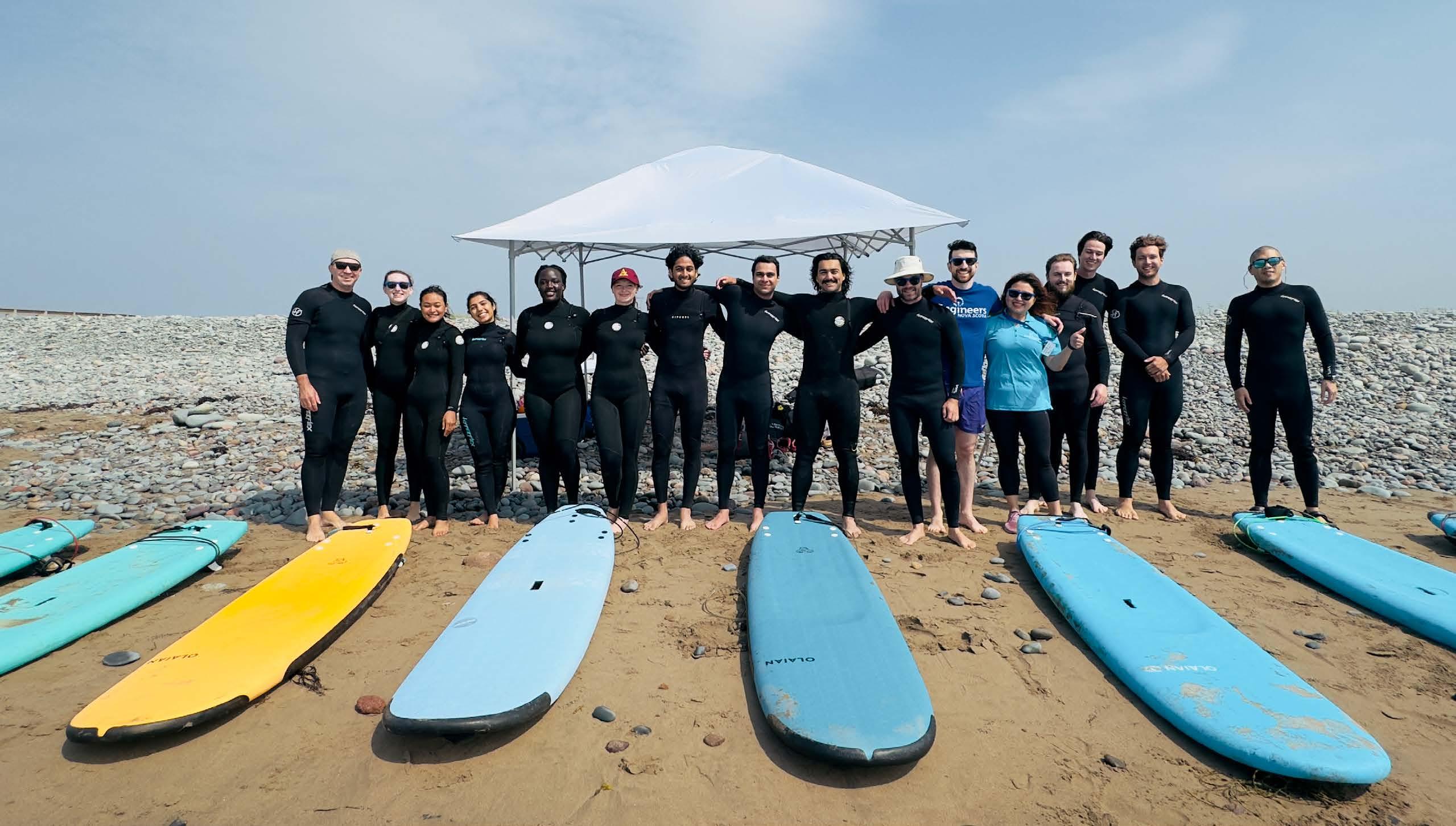
A group of engineers spent part of their Natal Day weekend at Lawrencetown Beach at a surf school organized by the Emerging Professionals Committee. Thank you to East Coast Surf School’s excellent instructors for their guidance.
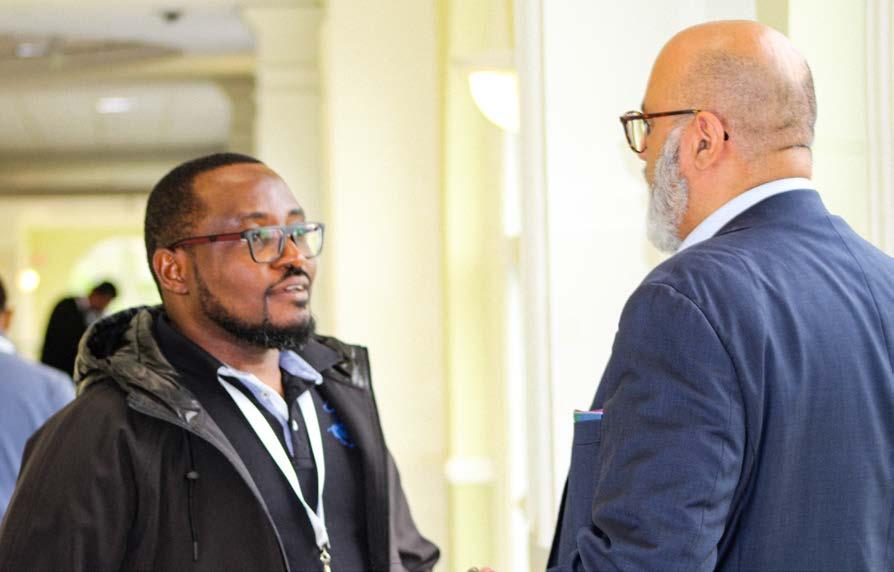
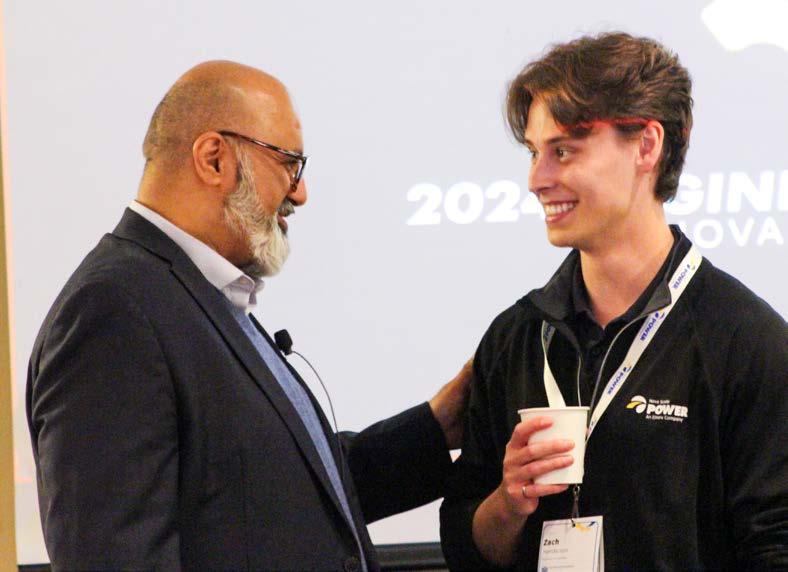
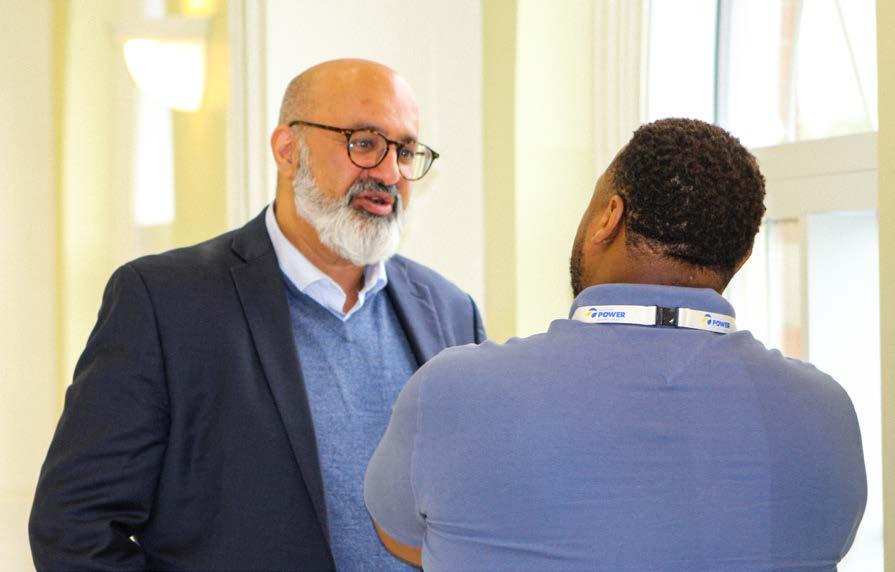
Our CEO and Registrar, DS (Pal) Mann, CD, FCSSE, ICD.D., P.Eng., connected with 200 professionals at the Nova Scotia Power Inc. Engineering Conference. As a member of the engineering community, if you are interested in arranging a presentation, contact outreach@engineersnovascotia.ca
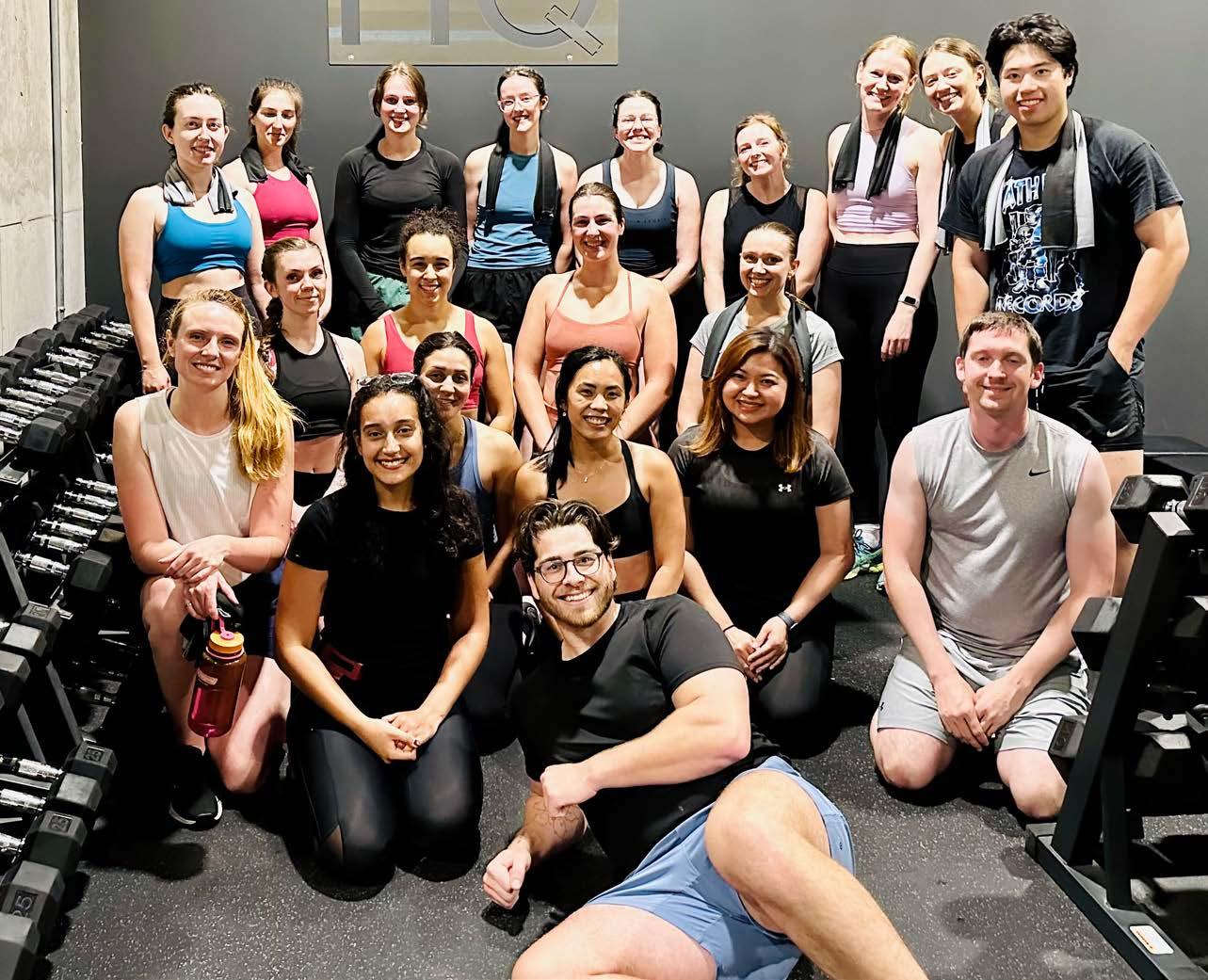
Engineers and friends brought their energy and enthusiasm to an R Studios fitness class with the Emerging Professionals Committee.

Engineers Nova Scotia’s offered a tattoo station during the 2024 Halifax Pride Parade which always provides a fun and fantastic opportunity for honoring 2SLGBTQ+ pride.

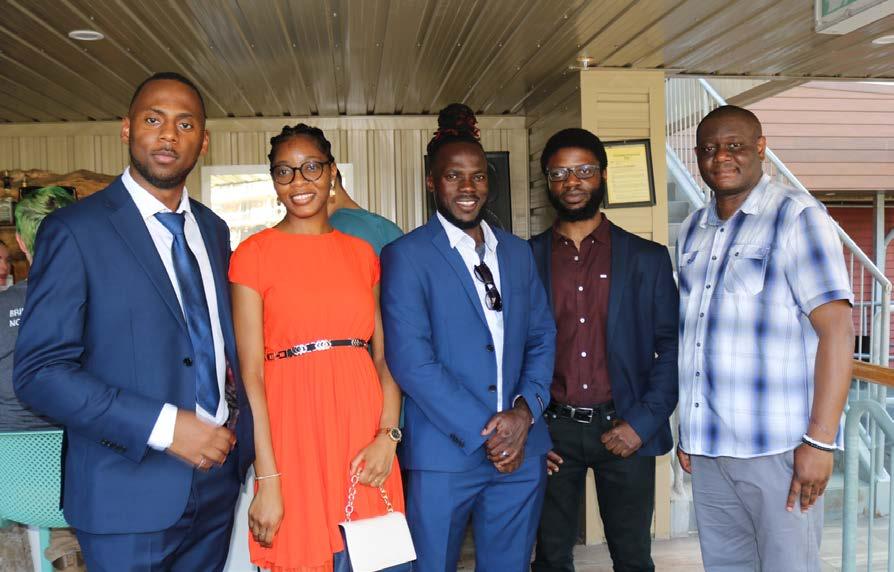
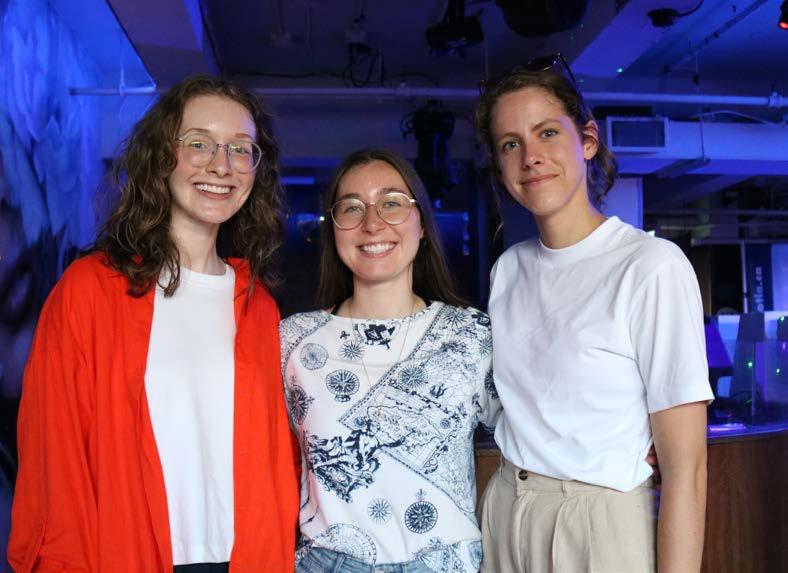
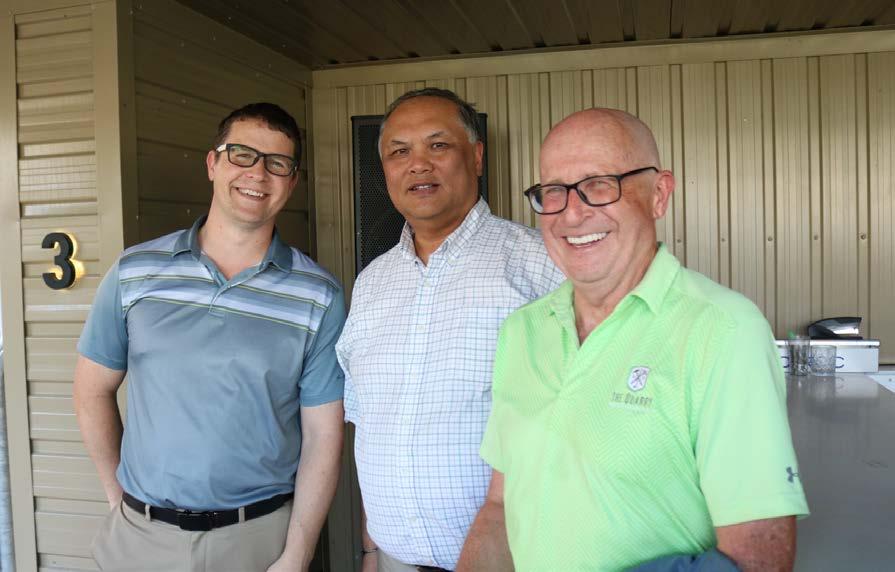

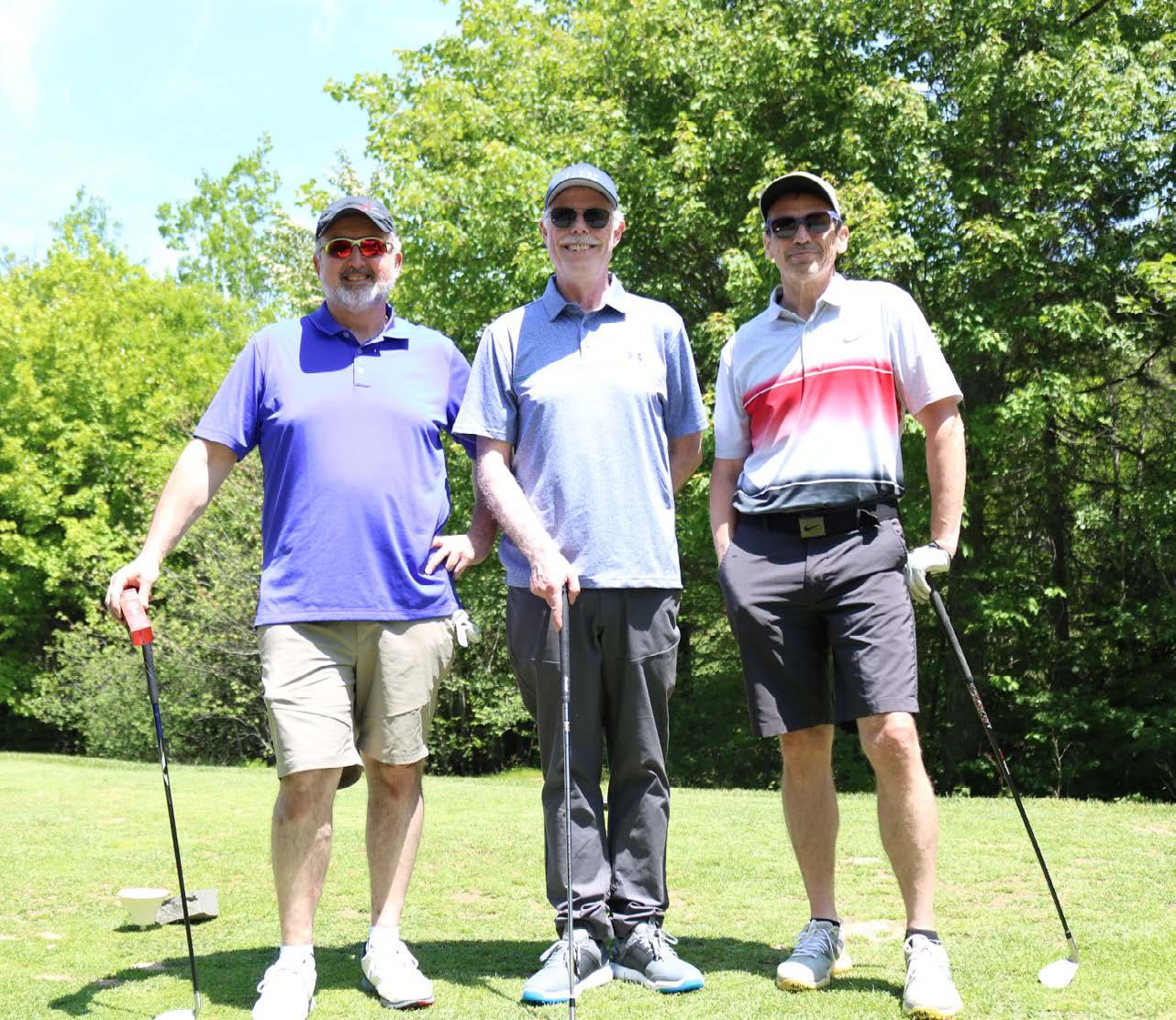
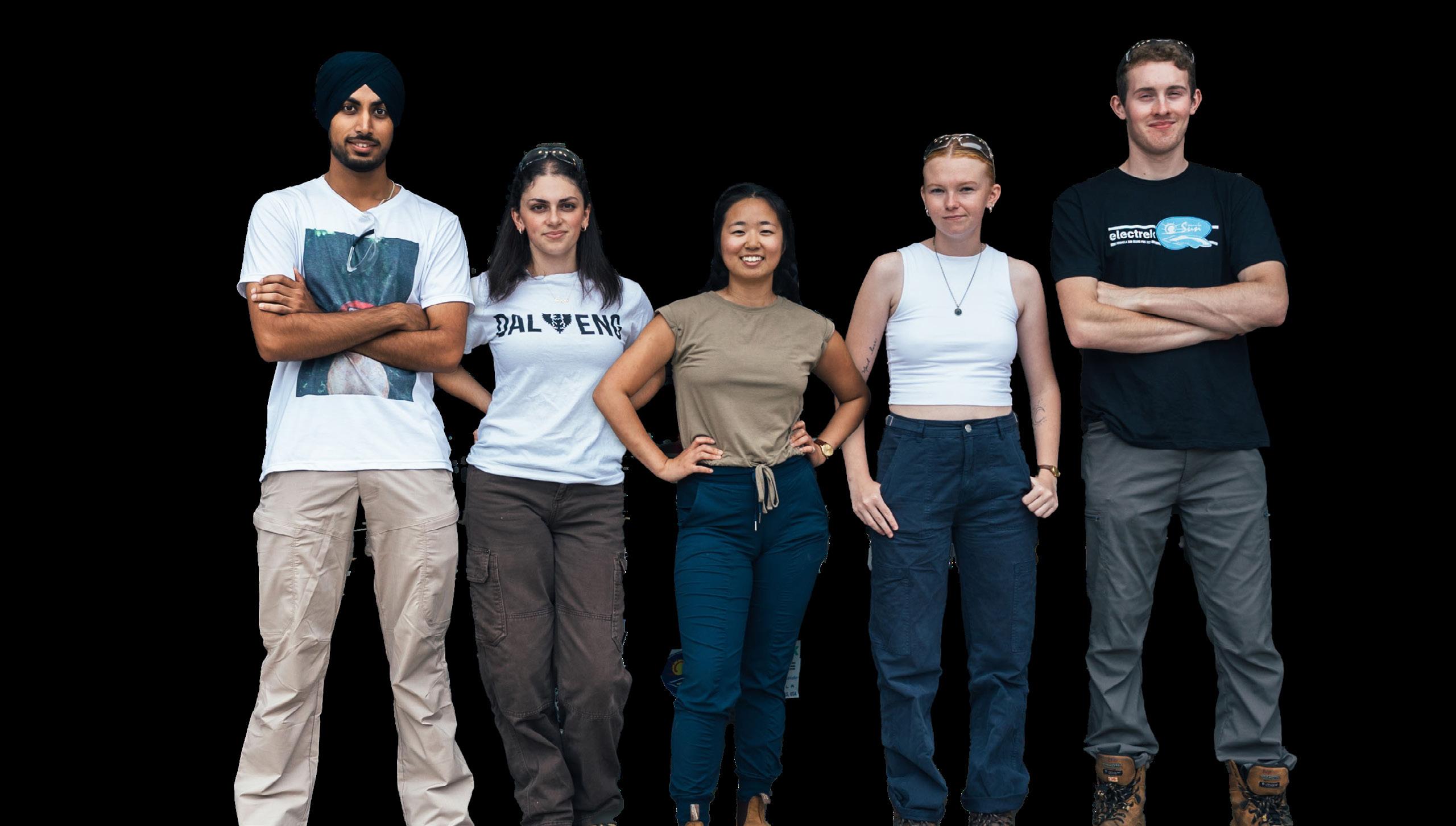

A mechanical engineer by discipline, Hamed Soleimani, M.Eng., P.Eng., pairs his innate practicality with deep-seated care as he devotes his time to building relationships within the engineering community and fostering a progressive regulatory environment.
Hamed received his bachelor of applied science in mechanical engineering from Azad University in Iran and spent the first decade of his career working in quality management at manufacturing corporations.
Wishing to gain new opportunities through international experience, Hamed immigrated to Nova Scotia in 2012.
He recalls the exact day he landed on Canadian soil: December 16, 2012.
“I remember how cold it was that night,” says Hamed with a smile.
“People warned me about the weather in Canada, but I didn’t understand what ‘cold’ really meant until then.”
Hamed embarked on the next leg of his engineering career almost immediately after the move, starting work as a Mechanical Engineer for PINTO Engineering. Over the next seven years, he quickly transitioned into the managerial space as a Quality Manager for numerous organizations, including DSME Trenton (Daewoo Shipbuilding & Marine Engineering), MetOcean Telematics, CarteNav Solutions and MacKenzie Atlantic.
The through-line in Hamed’s career pathway is a driving passion for high-caliber products, processes, and services. In his current position as Quality Assurance Engineer at Irving Shipbuilding, Hamed stays true to this sentiment.
“I’ve always been interested in the manufacturing space, and every day presents a new challenge,” says the engineer. “Every job I’ve had has led to this point.”
Hamed supports Irving Shipbuilding’s National Shipbuilding Strategy by conducting internal audits of technical documentation to ensure projects follow contractional standards. His efforts have focused on the Arctic and Offshore Patrol Ships being constructed for the Royal Canadian Navy and the Canadian Coast Guard. With time, he will switch to work on the Canadian Surface Combatants underway for the Royal Canadian Navy.
The mechanical engineer best summarizes his experience: “I find ways of improving projects and helping businesses implement them.”


Six years ago, in 2018, Hamed got his P.Eng. designation. This time was particularly special, as he graduated with his master’s in mechanical engineering from Dalhousie University.
“It was always my plan to continue my education,” he says. “I wanted to have a degree in Canada to see what the educational system was like.”

Not long after these incredible feats, Hamed began volunteering with the Immigrant Services Association of Nova Scotia’s (ISANS) Orientation & Communication Skills for Engineers (OCSE) class. As someone who had just studied and passed the National Professional Practice Examination (NPPE), Denise Callahan, English as an Additional Language Instructor at ISANS, invited Hamed to share his story with new immigrants who were also prospective professional engineers.
Since 2018, Hamed has attended OCSE classes several times a year and watched well over 100 internationally educated engineers (IEE) practice their presentation skills.
“I know the P.Eng. process well and communicate the steps in a checklist form. It’s almost as fulfilling for me as it is for them when I see an immigrant engineer complete the process,” he says.
“Internationally educated engineers face unique challenges, especially in adapting to a new home and work environment,” Hamed adds. “It’s a huge accomplishment for those who overcome these barriers.”
According to Callahan, Hamed is actively engaged with each IEE, asking questions and providing personalized
Hamed Soleimani, M.Eng., P.Eng. at his citizenship ceremony.
Photo Courtesy of Hamed Soleimani
feedback to identify their strengths and areas for improvement.
“His perspectives are invaluable, and I’ve heard over and over from IEEs in class that meeting Hamed is a course of inspiration for their engineering journeys in Nova Scotia,” says Callahan. “I’m grateful for his generous willingness to share his time, energy, and expertise.”
Hamed has led by example as an IEE who has overcome barriers and found his niche within the industry. As an active member of Engineers Nova Scotia’s Professional Practice Committee since 2021, Hamed is involved in discussions of engineering regulation.
“It’s been a wonderful experience volunteering for the Association, specifically for the Professional Practice Committee,” he says. “I want to be an active part of the engineering community.” Kris Dove, P.Eng., Chief Operating Officer and Treasurer of Engineers Nova Scotia has seen firsthand the value that Hamed has brought to Professional Practice Committee.
“With his extensive knowledge of codes and standards and unique perspectives as an IEE, Hamed has helped shape many of the guideline updates that are currently underway.”
May 30, 2024, may have felt like an average day — perhaps a day that you don’t recall. But for vessel owners and Nova Scotia’s electricity industry, May 30 marked a major technological development: the world’s first successful demonstration of a high-power vessel-to-grid.
Announced by front runner in grid-integration intelligence for electric vessels, BlueGrid, a global pioneer in high-output electric motor systems Evoy, and aluminum boat manufacturer ABCO, the vessel-to-grid (V2G) technology allows bi-directional power transfer between electric vessel batteries and electricity grids, thus encompassing two main benefits.
First, electric vessels offer a cost-effective way to bridge gaps in wind and solar electricity generation by providing grid support during peak demands periods when plugged in. Second, vessel owners can have a new vessel-to-grid revenue stream to reduce their cost of ownership, incentivizing sustainable practices.
“We’re solving the intelligence and data interaction of electric boats and electricity grids to improve outcomes for both the vessel operators, the utilities and everybody in between,” says CEO of BlueGrid, Trevor Hennigar, P.Eng.
BlueGrid saw the potential for the marine sector to transition to more environmentally friendly operations
through data intelligence about three years ago. The company’s 13-person small-but-mighty team has focused on effectively implementing a solution to integrate electric boats into electricity grids, hence V2G.
“We wake up every day working hard to advance this mission and solve some real engineering challenges that create better outcomes,” says Hennigar.
ABCO, an engineered metal goods provider, has been all aboard the ocean-friendly train — in this case, the fully welded aluminum electric vessel. The Lunenburg-based company’s value has materialized through structural expertise; ABCO has intelligently assembled a boat with cutting-edge grid capability.
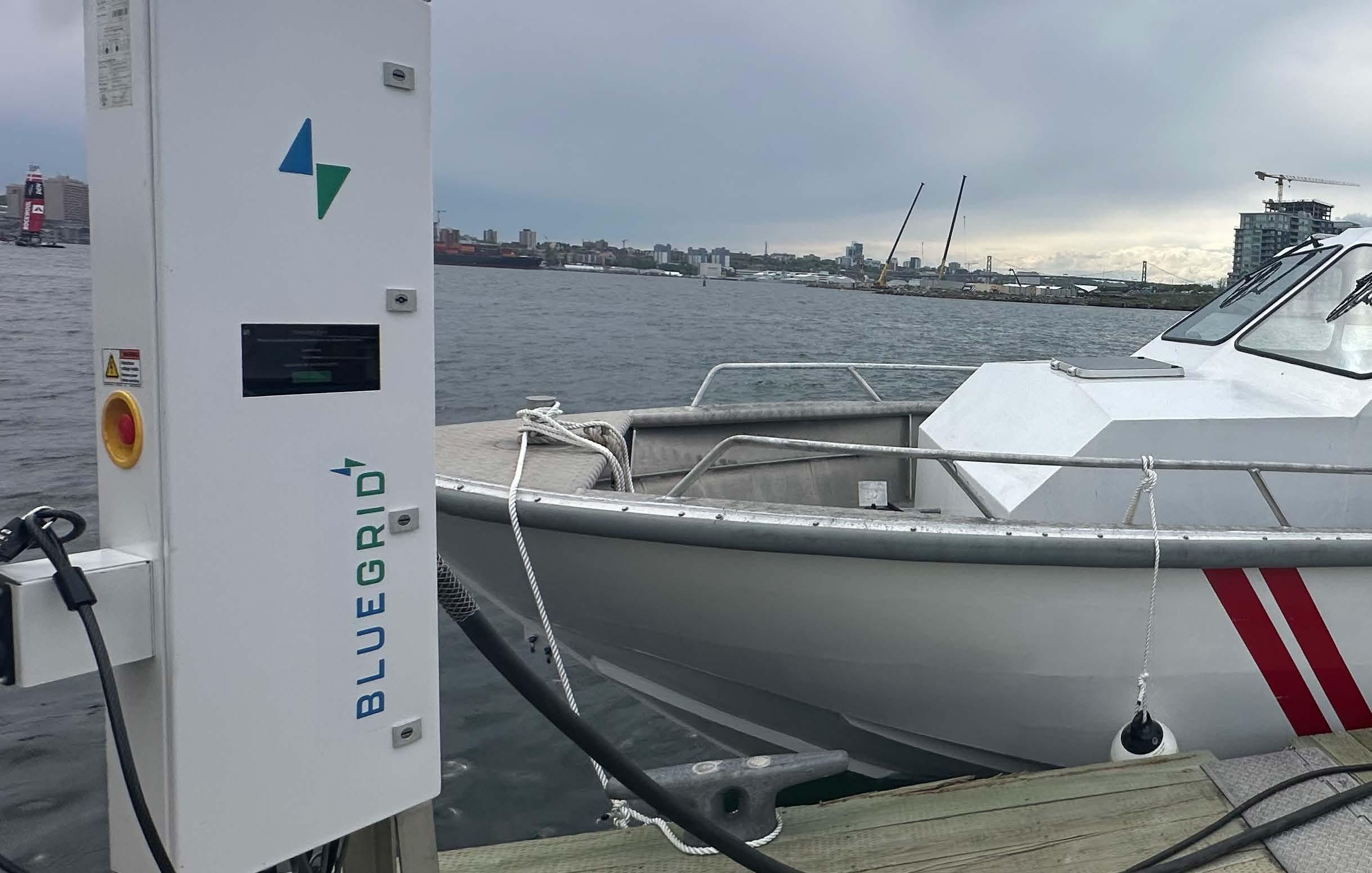
According to Jason Huskilson, P.Eng., CEO of ABCO, significant engineering was involved in the manufacturing. Producing a fully electric boat is not a readily available off-the-shelf solution — it’s artful and detail-oriented work.
Huskilson is motivated by stewardship, which is arguably an emerging identity marker for Nova Scotia’s technology industry. As we face pressing ecological challenges, it’s hard to separate the terms “innovation” and “sustainable.”
In fact, Halifax was ranked 4th out of North American cities by the 2023 CRBE Scoring Tech Talent report for its growth potential in the technology sector. Innovators like Huskilson and Dr. Colin Ross, Head of Research
and Development at ABCO, strive to uphold this growth.
“For a long time, marine communities like Nova Scotia have used the ocean to pull from, to use, to consume,” says Huskilson. “But now we’ve positioned ourselves to blend the ocean as a resource with monetizing its protection through things like data collection.”
“ABCO’s history in the commercial boatbuilding sector has allowed us to bring a unique perspective to the project, engaging with the propulsion system designers and charging infrastructure providers to ensure the technology is ready for use,” Ross adds.
The technical demonstration would not have been possible without the trifold collaboration of ABCO and Evoy’s hardware, BlueGrid’s software

and the grid itself, which is tied to stakeholder Nova Scotia Power.
As a crucial puzzle piece, Evoy CEO Leif Stavøstrand, acknowledges the commercial and regulatory hurdles bound to new technologies. A system must be a usable asset for all parties involved to be widely implemented, and V2G is this case in point.
“We strongly believe that V2G will be important for the renewable energy focus and deployment, says Stavøstrand. “Virtual power plants and vessel-togrid will be essential for both utilities and end-users seeking to lower energy cost and balancing the grid.”
The “world’s first successful demonstration” of V2G is as substantial as it sounds. As far as online reports go, BlueGrid’s announcement is the sole instance in which power has been moved from a boat’s battery through a charger and onto a grid for dispatchment.
Hennigar fondly speaks on the project’s personal significance to him, and its potential for up-and-coming engineering talent.
“When I went into school there was a big opportunity to build a career in the renewable energy space — when turbines and different things were new and innovative to the region,” he says.
“I think we have a similar opportunity in this space around decarbonizing the marine sectors and young engineers playing a really key role.”
Engineering education should prioritize hands-on learning and opportunities for trial and error.
This concept is what drives Saint Mary’s University’s (SMU) recently announced engineering facilities and faculty expansion to the former Language Centre building at 960 Tower Road this September.
This move is about accommodating more students and providing them with the best possible learning environment, fostering creativity and technical growth through experimentation in state-of-the-art laboratories.
The expansion, which aims to increase the engineering program from 240 to 320 students over the next two academic years, is a testament to SMU’s commitment to a brighter future for up-and-coming engineering professionals.
According to Dr. Samuel Veres, P.Eng., Dean of the Faculty of Science, this expansion has been anticipated for a long time.
“When I started at the university in 2013, engineering was already trying to acquire additional space on campus to provide students more interactive activities that are so important for engineering education,” says Dr. Veres. “When the space became available on Tower Road, it was finally identified as a space for us to provision the program better.”
Faculty offices, research spaces, engineering classrooms, laboratories, and design workshops will be relocated and reimagined in the three-floor building.
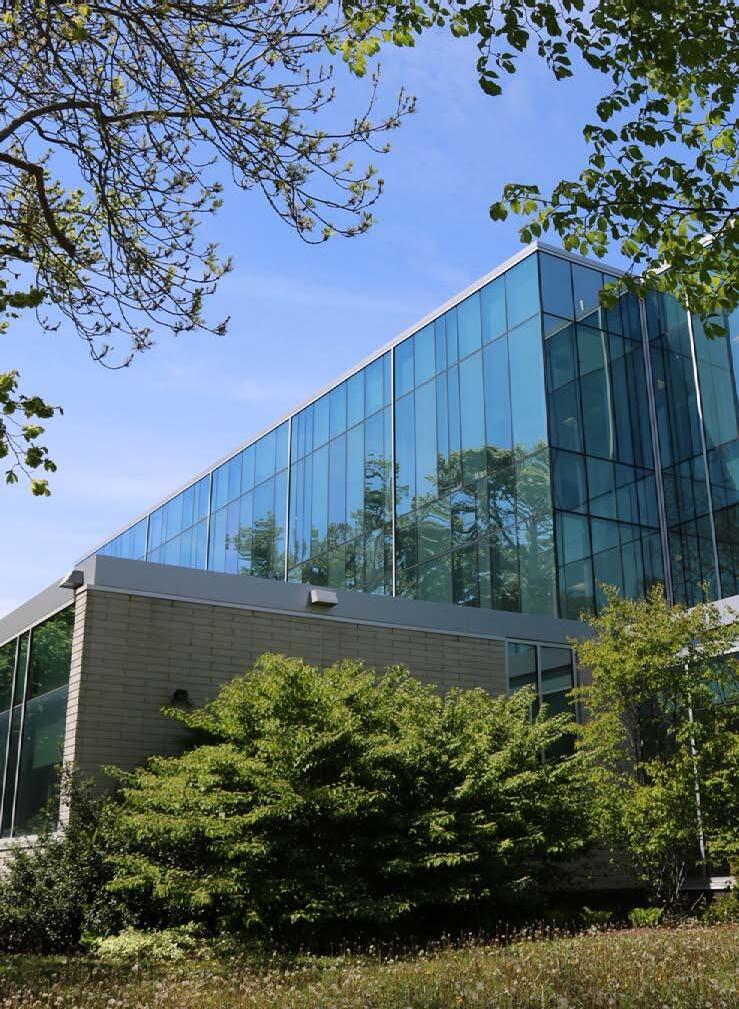
After an initial architectural study to confirm the space size would suit their purposes, the Director of Engineering, Donald MacNeil, P.Eng., was primarily responsible for the functional layout.
“He was able to sit with the new floorplans and compare them to the current space and set out a plan for each,” says Dr. Veres.
MacNeil determined the first floor will house open-concept workspaces to facilitate group work in design projects. The second floor will hold expansive classrooms and labs, including mechanics of materials, electric circuits, and thermofluids. And finally, an engineering design classroom and faculty research labs will be on the third floor.
The building is roomy and bright—a facility that evokes modern innovation.
“In our previous space, we’ve had to reconfigure it to suit various activities
at different times of the year,” says Dr. Veres. “When we’ve had a thermodynamics lab, for example, we’ve had to remove apparatuses from storage and set them up and then remove them for the next afternoon’s mechanics of materials lab.”
“In the new building, the idea is that we’ll have all of these activities in semi-permanent, individual configurations to allow students to undertake more hands-on work and more students than previously possible.”
Quite often, in an undergraduate engineering laboratory setting, classes are split into two groups—one working on a paper-based problem that is more tutorial in nature and the other on a physical experimentation activity. The new layout’s larger classrooms will allow class groups to work directly beside one another, naturally switching activities halfway through, rather than moving rooms as they had to in the previous space.
SMU Faculty now have the opportunity to develop a broader range of lab assignments, thus creating a sense of continuity between applied theory and real-world engineering problems.
“It’s through these interactions that you learn how the world works. Engineering students need to be assembling, creating, designing and testing,” Dr. Veres says. “Being able to relate that physical design work and laboratory testing to the theoretical work they’re getting in lectures is a feedback mechanism where one helps support the other.”
When a student can construct something and find out it doesn’t work in testing, determining what needs to be changed or adjusted elicits problem-solving skills — a central quality of engineering excellence.
SMU Engineering acknowledges and appreciates each student’s problem-solving learning preferences.
“Some students can very quickly see how to take the theory and apply that to their physical tasks, and for some students, it’s the opposite — they gain a lot from that physical experimentation and that then makes them able to absorb and appreciation that theoretical knowledge that they’re getting better.”
Beyond the immediate improvements to the university’s offerings, this locative move is part of a far more expansive mission. As a passionate researcher and trailblazing mechanical engineer, Dr. Veres hopes to see more SMU engineering graduates engaged with the community in Nova Scotia, both on and off campus.
Working in duality to serve Dr. Veres and other faculty’s vision, SMU Engineering is in the middle stages of developing a 16-month master’s in engineering management program at the university, which the new facility would support.
“We hope the master’s program will be a good way for those engineering students who have graduated and had a couple of years in the workforce to transition into managerial roles that a lot of engineers begin without any formal training or education,” says Dr. Veres.
“We’re excited about the prospect of appealing to graduates who have maybe gone to other provinces to work and are looking for a pathway to move back home and continue in the engineering field.”
SMU’s prospective master’s in engineering management program would be
unique in its collaborative effort in the North American landscape.
While a typical engineering management degree consists of business courses slightly restructured to suit people with an engineering background, SMU’s division of engineering, industrial organizational psychology group and management science group in the Sobey School of Business are working to create one-ofa-kind programming. These critical and disciplined managerial courses will draw on real-world interactions in the engineering sphere.
Once the curriculum is finalized, the university will submit it to the Maritime Provinces Higher Education Commission for approval. The goal is
to initiate the first student intake in September 2025.
“The industrial organizational psychology piece will set this program apart from others,” says Dr. Veres. “Engineers usually don’t receive any training on managerial skills, so we’re looking forward to offering a more formalized pathway to success.”
SMU’s coupled efforts will undoubtedly encourage professional practice, intellectual ability, and clever inventions within the engineering profession in the province and beyond.
With these developments on the near horizon, Dr. Veres is energized to be involved in teaching and uplifting the next generation of engineers.
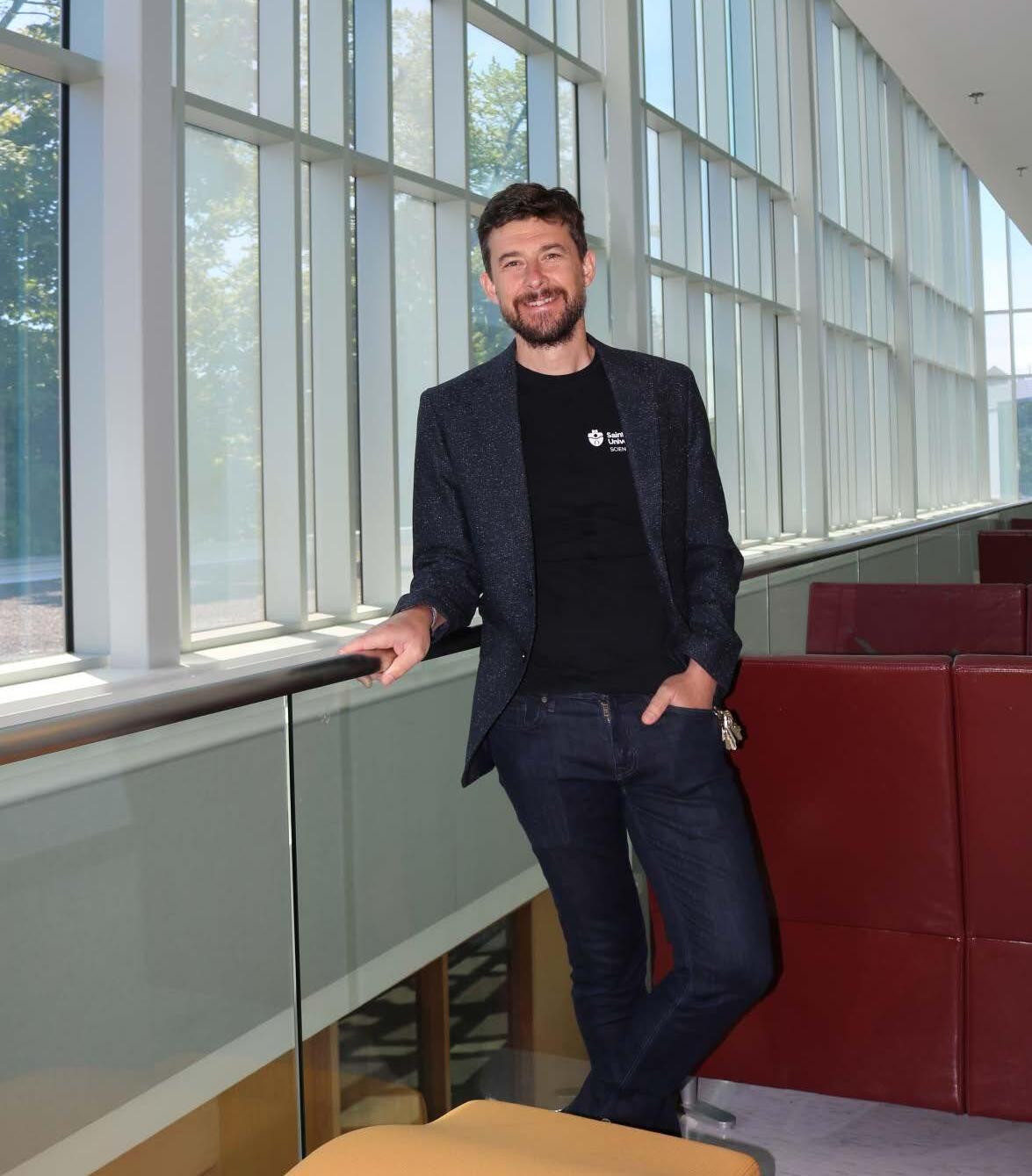
Every year, 20 of North America’s top industrial engineering student teams travel to compete in the Institute of Industrial & Systems Engineering (IISE) Outstanding Capstone Competition.
This year, from May 18-21 in Montreal, Dalhousie University’s Nova Scotia Health Long Term Care Inter-Facility Transfer Tool student team proudly placed second for the Outstanding IISE Capstone Senior Design Project award in the Service Systems category, outranking teams from universities across North America.
The revolutionary project is led by students Amelia Lane, Lindsay Cormier, Borna Baradaran-Noveiri, Joachim Mwebembezi, and Neel Patel, with Faculty Mentor Dr. Peter Van Berkel and Engineer-in-residence Sandra MacAulay Thompson.
In an interview with Engineers Nova Scotia this summer, Cormier and Lane shared their key takeaways from their eight months of collective engineering work, which led to their impressive success at the IISE Competition.
In Nova Scotia, there are many people waiting to transfer into a different long-term care facility. These include
individuals who have been placed from a community or out of a hospital as quickly as possible, particularly out of necessity during the height of COVID19, when there were significant access and flow challenges within acute care.
Lane explains that these people are on the waitlist for a multitude of reasons, whether they want to move to a facility closer to their hometown or to a community where one of their family members resides.
“Between 30-40 percent of all longterm care patients in the province are on this waitlist, and we were tasked to shorten it,” says Lane. “Our team took it as a network problem, so we tried to figure out how to optimally allocate people within the waitlist to make as many people as happy as possible without adding any beds to the facilities.”
With a research focus on optimization and routing in healthcare, Lane worked on the back end of the proposed Inter-Facility Transfer Tool, developing algorithms to fulfill the team’s complex and multi-faceted task.
According to Lane, the team turned the waitlist into a network where every person represented a “node” to look at every potential transfer between people on the waitlist.
It’s like an engineered game of musical chairs — one person moves into an empty bed, and someone moves into their bed, moving as many people as possible without adding any beds.
The team also considered Nova Scotia government’s long-term care placement policy which prioritizes people who have been waiting longer or who have spouses in other facilities.
“We scored each potential transfer based on a variety of attributes so that the algorithm would suggest the more important moves earlier in the chain,” says Lane.
Cormier was largely involved in the Excel-based user interface — the dashboard that, in theory, Nova Scotia Health’s Continuing Care team will use to facilitate these important moves.
The idea is that a health director looking to transfer or swap a single person or group of people would open the tool on their computer and proceed accordingly:
The user can upload a brand-new waitlist to ensure the data is constantly up to date and adjust the point value assigned to each person from most important to move to least important to move.
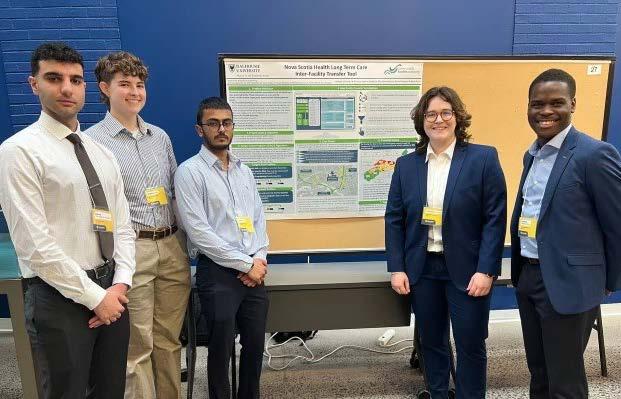
∙ The user can then log a vacancy in a pop-up window, specifying the facility in which the vacancy occurs, the gender, bed type, and whether there are smoking or non-smoking beds.
The user can then generate either chain results or cycle results; if there is a vacancy, a chain, and if there’s no vacancy, a closed system generates cycle results.
∙ To see the full chain or cycle in a tabular form, the tool lists from top to bottom the sequence in which you would transfer patients, the distance each transfer would take, and the patient’s priority number.
Another innovative addition to the Inter-Facility Transfer Tool is the “preferences” section. Users can exclude or include different attributes and slice their data to segment large waitlists into specific sections.
“During the simulated testing, we were averaging 30 to 35 percent
potential waitlist reduction with each solution,” says Cormier.
The project is in the pilot stage, in the hands of Nova Scotia Health’s technical staff. According to Cormier, the student team is working alongside Nova Scotia Health to get the tool directly to users so they can experiment and learn the system’s requirements.
A non-traditional approach to operations research
Lane and Cormier agree that their collective efforts have been driven by human satisfaction. This project involves more emotion than other engineering work they’ve been involved in or exposed to. As thoughtful and intelligent students, they have been able to anchor their technical ability with a much more emotive driving force.
The students have been given the chance to work with 7.3 million decision
variables to maximize resident quality of life by being able to move to one of their preferred facilities.
“In our scoring table, we’ve tried to come up with algorithms and linear programs that has a more human touch than we’re used to,” says Lane. “We’re not just trying to find the longest possible chains — we’re trying to find strong chains from the beginning.”
It’s one thing to figure out the engineering side of things but another to understand the why — the personal reasoning holistically.
“This project has been my blood, sweat and tears for close to a year now, and we’re lucky to have such a wonderful team,” adds Cormier. “We’ve had to figure out how to work as best as we can together because we’re not making a client more money. We’re dealing with elderly folks wanting to reunite with their families and communities.”

The Atlantic Science Links Association (ASLA) has found its stride through an expansive volunteer network of professionals across Nova Scotia who offer their time and expertise to promote STEM education among primary to grade 12 students.
ASLA’s annual events calendar uniquely blends knowledge sharing, cross-industry collaboration, and interactive in-person programming. The organization’s free events serve as a platform for the science and engineering community to connect with youth, teachers, and the public, fostering a spirit of inclusivity and learning.
Last December, 1281 students from 20 schools and seven Regional Centers for Education competed in ASLA’s second annual Science Contest — a series of multiple-choice questions curated by volunteers. Dalhousie University’s Faculty of Science, Engineers Nova Scotia and the Natural Sciences and Engineering Research Council funded the contest.
The 140 top-scoring students, their parents, families, and teachers were invited to celebrate at an awards ceremony this past May at Dalhousie’s Life Sciences Center. Engineers Nova Scotia Director of Professional Sustainment and ASLA Board Member, Heidi McKnight-Whitford, P.Eng., proudly presented some of the awards and cheered on winners.
“The number of students who came from across Nova Scotia with their families on a sunny weekend to celebrate their achievements in STEM education hit home for me,” says McKnight-Whitford. “ASLA and Engineers Nova Scotia have joined forces to energize youth to consider a technical career path, and events like the Science Contest support our shared mission.”
ASLA’s success is a testament to its leaders’ passion and shared vision, who dedicate themselves to building a stronger STEM community. ASLA President, and Dalhousie University Biology Professor Arunika Gunawardena, and ASLA Executive Director and Teaching Fellow Rajesh Rajaselvam are proud of initiatives like the Science Contest, which have significantly contributed to the growth of STEM education in Nova Scotia.
Invigorating the engineering community to volunteer is particularly crucial to outreach across regions.
“Our end goal is to have children think critically and problem solve,” says Gunawardena. “Engineering is important to this mission because it’s the field
where students can apply these skills and expand their creativity.”
“We want students to have all of the resources from different disciplines of technology available,” adds Rajaselvam. “The engineering component of our organization is vital to keep the enthusiasm of young minds. Just as we need engineers in society, we need them to be part of our team.”
Gunawardena and Rajaselvam encourage engineers to contribute knowledge to inspire the next generation of professionals through ASLA’s varied services, including classroom presentations, career fair speakers and workplace visits.
Volunteers are welcome to dedicate as much time as they’re comfortable and able to. Depending on the resources the schools request from ASLA, volunteers are contacted several times yearly to attend an in-person function. The Volunteer Profile Form details the information required to join ASLA’s growing volunteer database and contact list.
“We do this from our heart to enhance science and engineering in Nova Scotia,” says Rajaselvam. “Teachers believe in us, and we want to provide them with helpful resources in return.”
ASLA wholeheartedly believes that face-to-face interaction with successful STEM role models motivates students to explore their interests further and, in turn, expand their scope of possibility.
“Everything we do in our lives is connected with science and engineering,” adds Gunawardena. “We want to bring this understanding to youth across the province.”
Originally published in Dalhousie University Faculty of Engineering’s Spring 2024 magazine
Written by Philip Moscovitch
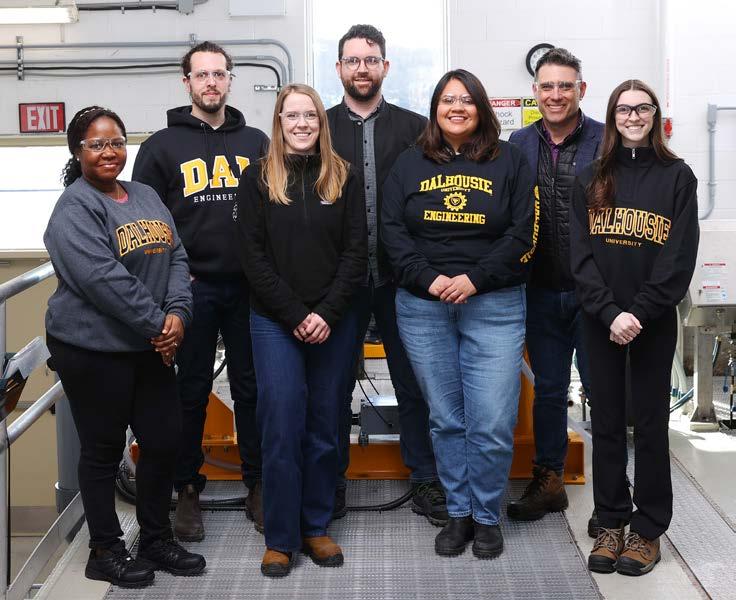
Dalhousie Engineering Professor Dr. Amina Stoddart, P.Eng., specializes in wastewater treatment. When the COVID-19 pandemic emerged, like many others, she actively sought out ways to utilize her expertise to aid in the crisis.
Monitoring local wastewater levels, Stoddart played a key role in the development of a rapid and highly efficient test for detecting SARS-CoV-2, the virus responsible for COVID-19. Additionally, when high-quality masks were in short supply, she worked on a technique to disinfect N95s using UV LED lights.
That project has led to exciting new research focused on using UV LEDs for municipal wastewater treatment. If the lights could disinfect masks, what about water?
Mechanical wastewater treatment involves several steps. The last stage in the process includes using UV lights to eliminate micro-organisms by disrupting their DNA. However, standard UV lights
come with drawbacks. They contain mercury, posing an issue if they break. Stoddart says if the bulbs heat up, “some of the contaminants still in the wastewater can bake onto the bulb” and diminish its efficacy. “They are huge lights that are on all the time, so they require a ton of energy,” she adds.
Enter the UV LEDs. “The light on your phone is an LED. If you think about that from an engineering perspective — wow! You’ve got so many more design capabilities.” In contrast with long, fragile, energy-intensive mercury-based lights, LEDs can be clustered together, and don’t generate heat in the same way as conventional lights.
Stoddart is currently running a study using the lights in a reactor at Halifax Water’s Eastern Passage wastewater plant, which can treat about 450 litres of water a minute, or 648,000 litres a day. (The full plant treats 25 million litres daily.)
“Halifax Water have attached this reactor for us, which is kind of a side stream. It pulls water into our reactor right before it hits their UV lights,” where it is exposed to the LEDs, Stoddart says. So far, data shows the UV LEDs are “better or the same as conventional treatment.”
Graduate student Bailey Reid is leading the analysis of treatment results. She says Stoddart encouraged her to pursue graduate studies, and she’s glad she was persuaded. “I’m really liking what I do. There are so many opportunities. I’m working with a reactor that’s the first in the world... I don’t know anyone doing this scale of stuff. It’s incredible.”
Another of Stoddart’s students, Esther Osei-Ampong, is conducting research into the use of UV LEDs at
Halifax Water’s Dartmouth Wastewater Treatment Facility.
Osei-Ampong already has a master’s in wastewater resource and environmental engineering, from the Kwame Nkrumah University of Science and Technology, in Ghana. She chose to continue her studies at Dalhousie, because the school “has the facilities and resources to help me achieve my aims… I want to be one of the best researchers and go back and help my country. At Dal, there is always hands-on practice,” she says. “They make everything practical.”
Her research involves working on a smaller scale than Reid, playing with different light intensities and chemical oxidants to remove organic matter from wastewater through advanced oxidation.
“We are doing this in the lab on a bench scale to see how it will work, and then we can maybe try it on a larger scale,” she says.
Preliminary results show that, used with the UV LEDs, hydrogen peroxide works well at lower doses, while chlorine is most effective at higher doses, she notes, adding: “It’s not conclusive yet, but it looks very promising.”
Wastewater treatment is serious business, and new treatments have to be backed by solid evidence before going into use. Stoddart says the research is promising, but there is still a lot of work ahead to see if approaches involving UV LEDs can be ramped up to a larger scale. “You must control effluents into the harbour, it’s very serious. Things have to work. It can’t just be trial and error kind of stuff.”
Principle engineers at TriMac Engineering, brothers Joel MacNeil, P.Eng., and Andrew MacNeil, P.Eng., have offered their engineering consulting, sustainability and project management services to clients across the province for nearly a decade.
Their next undertaking?
Partnering with Ontario company Solarbank Corporation to develop a seven-megawatt solar-panel garden near the Mayflower Mall in Sydney and a 10-megawatt solar garden in Enon, a rural community near Loch Lomond, as part of the provincial government’s newly announced Community Solar Program.
The Community Solar Program aims to open renewable energy generation to the market, calling upon non-profits, co-operatives, First Nations communities, municipalities, businesses, and academic institutes to submit solar garden project proposals. In line with the province’s plan to transition to 80 percent renewable energy by 2030, the Community Solar Program is looking to procure 100 megawatts of solar power, which will be distributed to interested parties on a first-come, first-served basis.
Alongside SolarBank, the co-developers, Joel and Andrew of TriMac, have enthusiastically stepped up to the task. As they await approval from the province, the TriMac team continues to seek additional sites for potential construction in hopes that the government will expand the program’s capacity to reach its ambitious targets.

If approved, the Sydney solar project could power up to 900 homes, and the Loch Lomond project could power about 1300 homes.
“This is the first community solar program in Canada,” says Joel. “It marks a big shift in the power generation landscape here in Nova Scotia, and there is a huge opportunity for engineering firms like us to tap into the future of power generation.”
Power generated from solar gardens under the Community Solar Program will be sold to Nova Scotia Power, the administrator, for a regulated fee. Nova Scotia Power’s ratepayers are then eligible to subscribe at no cost to solar garden sites for discounted power rates.
According to Joel, the target discount is about 2 cents per kilowatt hour, ranging from an 11-15 percent overall discount. Put simply, it’s renewable energy at a lower price — a win-win situation for all parties involved.
There have been several other large-scale renewable procurements in Nova Scotia, namely the Rate Based Procurement — comprised of 5 projects totalling 372 megawatts—and the Green Choice Program, with successful bids will be announced this September.
The Community Solar Program allows community groups and businesses to make solar energy more accessible to Nova Scotians. New gardens under the program are projected to be up and

running by spring 2026, but TriMac is prepared to begin construction next year if their applications are given the green light.
Joel and Andrew consider their involvement in the program complementary to their previous work in energy efficiency and building on what TriMac Engineering is known to be: an environmentally responsible corporate citizen striving for continuous improvement and technical excellence.
“Creating a solar garden is consistent with our values,” says Andrew. “It’s rewarding to be able to actively participate in reducing our reliance on more traditional, thermal forms of power generation.”
Looking towards the future of energy production, Andrew remains aware of the unique difficulties Nova Scotia faces regarding power generation.
“We don’t have abundant hydro sources like Ontario and Quebec. We have hydro, but it tends to be in rivers and small waterways, so it’s always been a little bit harder to produce,” he says. “However, now that we’re seeing more wind and solar added to the mix, making our grid greener, these are big steps in the right direction.”
The Community Solar Program diversifies Nova Scotia’s energy portfolio, allowing electricity to be flexible and best suit factors often out of our control. On a day that’s less windy and sunnier, for example, energy can be produced from solar panels rather than wind turbines, and vice versa. It’s sustainability in action.
Joel best describes solar expansion as “capacity building.” The industry will respond to demand as more active sites become available on the grid. Universities and colleges will build solar curricula, firms will devote resources, and new contracting services will pop up across the province—potentially offsetting the economic hit that continues to reduce the coal industry.
“Solar is at the same stage wind was at about 20 years ago in Nova Scotia, when the public was becoming more aware of renewables and seeing turbines for the first time,” says Joel. “There’s a lot of curiosity about solar energy, and we want to educate people and encourage discourse.”

Introduce yourself!
After completing a BSc in Biology and Sustainability in 2012, I taught for a few years in South Korea. While abroad, I realized I wanted to enact positive change in the built environment and study engineering. I then worked with the Federal Government in project management and strategic planning while in school. In 2019, I completed my BEng in Civil Engineering. Since then, I have worked for the Municipal Government. I participated in the four-year Engineers-in-Training (EIT) rotation program, where I had the opportunity to work in seven distinct engineering teams across Halifax Regional Municipality. I now work in the Facility Design and Construction group. Outside of engineering, I also teach yoga at Dalplex.
Please outline your volunteer experience with Engineers Nova Scotia.
Consistent with the inclusive space the Engineers Nova Scotia staff created, I’ve had the privilege of having many volunteer experiences with the organization. This includes being a member, the Vice-Chair, and, currently, the Chair of the Emerging Professionals Committee. Over time, I’ve organized engineering job fairs, networking events, presentations with the Immigrant Services Association of Nova Scotia and local universities, written articles for The Engineer, spoken on and moderated panels, participated in secondary and post-secondary talks on engineering, and interviewed Engineers Nova Scotia registrants for Engineering TV. I also volunteer with the Canadian Society for Civil Engineers and have hosted various panel discussions and events, and written articles in their quarterly magazine.
What kind of impact do you want to have on the engineering community in Nova Scotia?
There are so many amazing leaders and mentors in Nova Scotia’s engineering community. I hope to contribute to the groundwork they have laid by continuing to foster an inclusive space where everyone thrives. By bringing together the engineering community,
my goal is to continue the successful work of those who came before me and those who will come after.
Why would you encourage other professional engineers, engineers-in-training and engineering students to volunteer?
Volunteering with Engineers Nova Scotia is a fun way to meet people in the engineering community. For students and those just entering the profession, volunteering with Engineers Nova Scotia is a great way to grow your network and continue your engineering education. For more experienced engineers, it is a great way to give back to the community. There are a variety of unique committees to volunteer with to suit each engineer’s interest. For more information on Engineers Nova Scotia’s committees, check out https:// engineersnovascotia.ca/about-us/ committee-information/
Looking towards the future, do you have any professional or personal goals?
My fiancé and I are having our first child in September! I expect this new adventure will occupy most of my time. When I’m not changing diapers and watching our little one hit different milestones, I will study for the PMP exam.







